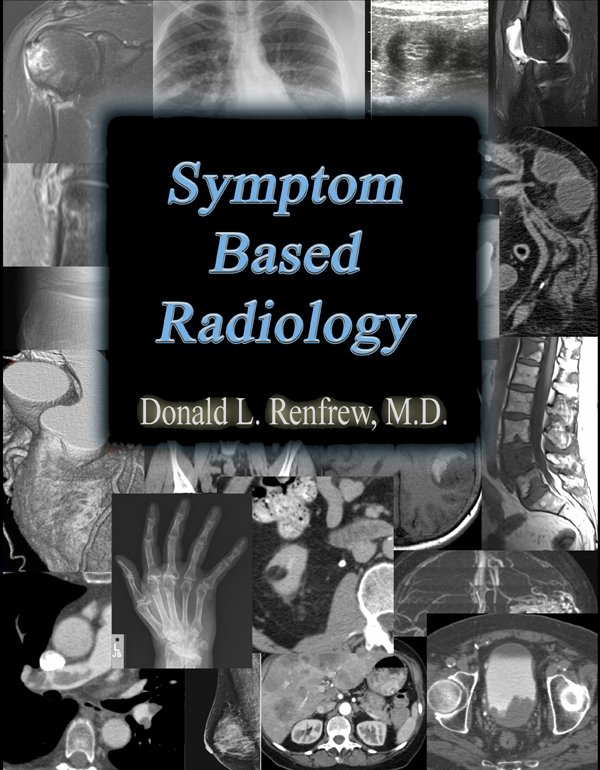Choosing the wrong imaging study leads to unnecessary costs, complications, and side effects (no citation needed!). Yet many seasoned clinicians sometimes have trouble with knowing what imaging study to order.
I think the author was correct in stating:
“I wrote Symptom Based Radiology to help primary care providers make better use of radiology services. The audience includes internists practicing general medicine, family medicine physicians, emergency room physicians, nurse practitioners, physician assistants, and specialists working outside their usual area of expertise. As a general radiologist, I have fielded thousands of phone calls asking which radiology study to order, and it seems that many times, despite good training and extensive experience, primary care providers need help in making this decision. More than 99% of existing radiology textbooks describe how to interpret imaging studies with little advice on what study to order. This book provides that advice….”
Donald L. Renfrew MD, Symptom Based Radiology (Preface)

Here are some “best test” recommendations from the book (from easy to not so easy…). Please note how subtle changes in the scenario can dramatically change the workup:
- sudden onset of isolated facial paralysis of upper and lower portions of face: usually no imaging (Bell’s palsy).
- facial paralysis with other deficits and/or with sparing of upper face: brain MRI.
- subjective tinnitus: no imaging study is necessary unless the pattern and demographics is suspicious for multiple sclerosis.
- objective (auscultated by examiner) tinnitus: Brain MRI plus MRA or CTA of skull base and neck vessels.
- isolated conductive hearing loss: no imaging if the history supports an obvious diagnosis such as cholesteatoma, otosclerosis. If cause is not clear, then order CT of temporal bones
- isolated sensorineural hearing loss: brain MRI without and with contrast (to rule out vestibular schwannoma).
- palpable thyroid lesion: fine needle aspiration (FNA).
- non-thyroid neck mass of unknown origin: neck CT with contrast plus (in a smoker) CT of chest with contrast plus referral to otolaryngology for biopsy and/or triple endoscopy (laryngoscopy, esophagoscopy and bronchoscopy).
I read this book for the same reason I read Cope’s Early Diagnosis of the Acute Abdomen: I wanted to know what a specialist with twenty-five years of experience (or more) would do. I therefore find the very extensive use of UpToDate as a reference source to be a bit of a distraction. I would be very interested in seeing an updated edition of Symptom Based Radiology with more references to primary sources in radiology literature. One of the best ways to learn how people think is to become familiar with what they read.


Leave a Reply